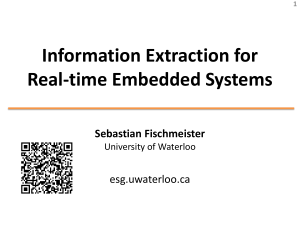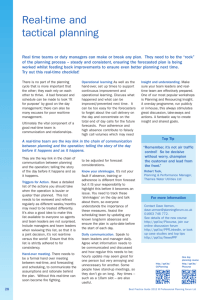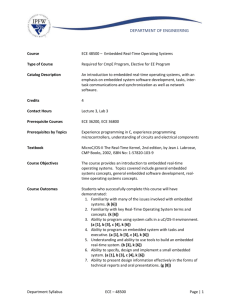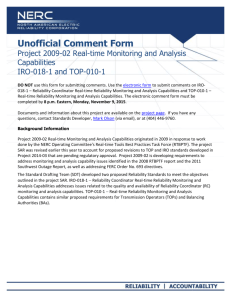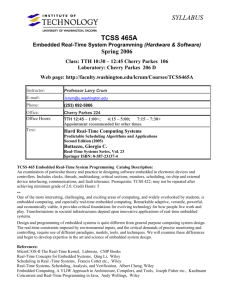Motivation
advertisement
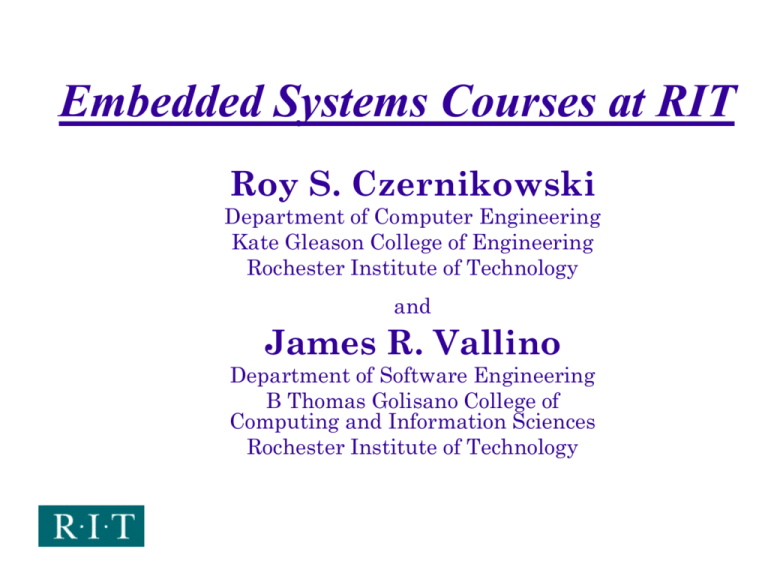
Embedded Systems Courses at RIT Roy S. Czernikowski Department of Computer Engineering Kate Gleason College of Engineering Rochester Institute of Technology and James R. Vallino Department of Software Engineering B Thomas Golisano College of Computing and Information Sciences Rochester Institute of Technology Motivation • Real-Time and Embedded Systems (RT&E Systems) straddle and intertwine hardware and software issues. • Computer engineering students tend to have the hardware and computer architecture aspects in focus but often lack more sophisticated software methodologies for RT&E Systems. • Software engineering students have many general purpose software methodologies at their fingertips but often lack the hardware background and appreciation for the special software considerations for successful development of RT&E systems. • Wanted to increase interest and employment in RT&E systems. RIT’s Approach to RT&E • Develop a laboratory and a set of three academic quarter courses to partner computer engineering and software engineering students addressing RT&E Systems. • Use a studio lecture-lab format having one computer engineering student and one software engineering student at each of the twelve student workstations. • Course contents and laboratory jointly developed by a faculty member from computer engineering and a faculty member from software engineering. Course Titles • Real-Time and Embedded Systems (offered four times to date) • Modeling of Real-Time Systems (offered twice to date) • Performance Engineering of Real-Time and Embedded Systems (offered the first time this spring) Real-Time & Embedded Systems Course • Course Topics – – – – – – – – – – – Introduction to Real-Time and Embedded Systems Microcontrollers Software Architectures for Real-Time Operating Systems Requirements and Design Specifications Decision Tables and Finite State Machines Scheduling in Real-Time Systems Programming for a commercial real-time operating system Development for Embedded Target Systems Language Support for Real-Time Real-Time and Embedded Systems Taxonomy Safety-Critical Systems Studio Laboratory Equipment Microcontroller and Binary I/O Software • Wind River VxWorks Consumer Devices platform • Tornado development environment • MGTEK 68HC12 Assembler IDE • Net Support classroom management software Course Projects • Microcontroller Programming – interval timer – used as a tool for 3rd project • R-T Operating System multi-tasking primitives – Using VxWorks, learn how to program its concurrency and synchronization primitives in a transit system simulation or automated factory • R-T Operating System performance measurements – measure jitter of VxWorks software generated pulses (using microcontroller) – measure VxWorks’ interrupt response time • Student designed projects – e.g. ultrasound distance measurements, target system’s I/O device characterizations. Modeling of Real-Time Systems Course • Course Topics – – – – – – – – – Introduction to Modeling of Real-Time Systems Basic Concepts of Real-Time Systems Basic Concepts of Safety-Critical Systems Use case analysis for real-time systems Structural object analysis for real-time systems Behavioral Analysis using statecharts Design patterns for real-time and safety-critical systems Threading and Schedulability Real-Time Frameworks Software • ILogix Rhapsody UML design tool • Microsoft Visual Studio C++; Gnu C++ tools Course Projects • Requirements and Architectural Design – Create requirements for a consumer device, e.g. DVR, blood-pressure monitor • Design and Implementation – Object structure, statechart design and implementation for a real-time system, e.g. water chiller control system, fourfunction calculator • Code Generation – Automated code generation via Rhapsody of embedded device, e.g. four-function calculator, garage door opener • Final Project – Object and statechart modeling exercise with no implementation of an embedded device, e.g. power window controller, reverse vending machine Performance Engineering of RT&E Course • Course Topics – Performance Measurements for Real-Time and Embedded Systems – Profiling of program execution in embedded systems – Exploration of linear control systems – Interpretation of linear control parameters – Hardware system description languages (VHDL) – Hardware-software co-design Quanser System Inverted Pendulum Quanser Ball & Balance Beam Digilent Spartan II FPGA Board Software • • • • • • Quanser WinCon real-time executive Matlab, Simulink Wind River Windview profiling tools Gnu profiling tools, e.g. gprof Xilinx VHDL design software Digilent FPGA programming tools Course Projects • Quanser inverted pendulum and ball-and-balance beam – Investigate effects of varying control parameters – Investigate effects of system loading on control performance • Loading and measuring the performance – Experiment with rate-monotonic scheduling – Measure performance under varying computational and network loads on different target platforms • HW-SW partitioning of JPEG compression between target system and FPGA board – Measure execution time differences with different hardware/software boundaries – Explore memory constraints and communication bottlenecks Equipment Costs Item Unit Cost Development PC’s $1300 Diamond Systems PC104 Targets 1270 Item Video convertors Ilogix Rhapsody (20 licenses) Digilent FPGA boards 115 Ultrasound sensor 68HC12 microcontroller 100 Station total Lamp/switch board 50 Unit Cost $200 800 35 $3495 Quanser pendulum 7485 Signal generator 310 Quanser ball and beam 8080 Power supplies 75 Tektronix oscilloscope 3300 Project Assessment • External academic and industrial review – Lab well-constructed and maintained with state-of-the-art equipment and software – Excellent teaming between SE and CompE students… and faculty! – Performance Engineering course should be more focused – Alter content of Modeling course toward CompE interests • Student course evaluations and surveys Strongly Disagree/ Undecided Disagree Strongly Agree/ Agree 2 7 43 Course increased interest in RT&E Systems 12 13 27 Will seek employment in RT&E Systems 5 10 37 Multi-disciplinary partnering helped learning 30% Course helped get a co-op or full-time job Future Course Directions • Real-Time and Embedded Systems – VxWorks kernel-level device driver projects • Modeling of Real-Time Systems – Better balance between CompE and SE interests – Make real-time aspects more explicit – Consider project with Java Micro Edition and/or VxWorks • Performance Engineering – – – – Student written real-time control system Better use of VxWorks profiling tools Expanded investigation of real-time scheduling Additional FPGA hardware/software co-design projects • Other Courses – Real-Time Operating Systems course scheduled for Spring 2006 Future Facility Additions • USB data acquisition boards • USB webcams • Real-time Linux variant Acknowledgements • NSF DUE Course, Curriculum and Laboratory Improvement funding (NSF DUE-0311269) • Academic Collaborators – Prof. Ron Schroeder, Southern Polytechnic State University – Prof. Yann-Hang Lee, Arizona State University • Industrial Evaluators – Todd Mosher, Alstom Transport Systems – Chuck Linn, Harris RF Communications Questions and Answers



